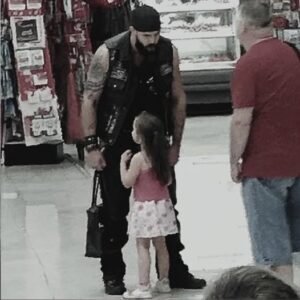California Governor Gavin Newsom is facing renewed scrutiny after recent remarks that critics argue appeared to endorse physical violence against supporters of former President Donald Trump. The comments, made during a public appearance earlier this week, quickly ignited a political firestorm, dominating headlines and trending across social media platforms. The controversy raises questions about the boundaries of political rhetoric, the responsibilities of elected officials, and the role of the media in shaping public perception.
The Speech and Its Fallout
During his remarks, Governor Newsom addressed America’s escalating political polarization and the dangers of extremism. His central message, according to supporters, was to emphasize vigilance against radical ideologies and the importance of preventing them from gaining further influence in American society. However, critics seized on a portion of his phrasing, interpreting it as a potential endorsement of aggressive tactics or even physical confrontation against political adversaries.
Opponents argue that such language risks legitimizing hostility in a political environment already fraught with division and tension. In their view, any suggestion that violence is an acceptable response to political disagreements crosses a dangerous line, undermining democratic norms and inflaming partisan animosity.
Supporters Push Back: Taken Out of Context
Those defending Governor Newsom insist that his remarks were taken out of context and misrepresented by opponents eager to score political points. They highlight his consistent record of condemning violence, regardless of its source, and argue that his comments were metaphorical rather than literal. According to his supporters, Newsom was speaking about confronting extremism through civic engagement, policy, and community action—not through physical altercations.
A spokesperson for the Governor quickly released a statement clarifying his intent. The statement stressed unequivocally that Newsom does not condone physical harm toward anyone, regardless of political affiliation. Instead, it reaffirmed his commitment to peaceful political discourse and opposition to violence in all forms.
Political Leaders Respond
The controversy has drawn reactions from political leaders across the spectrum. Some local officials in California echoed the Governor’s defenders, urging the public to view his remarks in their full context. Others, particularly national Republican figures, amplified the criticism, portraying his words as reckless and inflammatory.
Commentators note that in today’s hyper-polarized political climate, leaders must be especially careful with their language. Even statements that are not explicitly violent can be perceived as such, contributing to heightened tensions and mistrust. Civil rights organizations weighed in as well, calling on political figures to exercise restraint and model constructive dialogue. They warned that any rhetoric that could be construed as endorsing violence poses risks not only to public safety but also to the health of democratic institutions.
The Broader Media Landscape
The episode has also sparked discussion about the media’s role in shaping narratives. In an era dominated by viral clips, sound bites, and instant online reactions, comments are often stripped of nuance and repackaged in ways that amplify outrage. Critics of the media argue that selective reporting can distort the intended meaning of political statements, fueling division instead of encouraging thoughtful debate.
Supporters of more responsible journalism contend that this controversy highlights the need for deeper, contextual coverage. They argue that both journalists and the public must resist the temptation to react to short, edited clips without considering the broader speech or intent. The responsibility, they say, lies with both reporters and news consumers to engage critically rather than reactively.
The Responsibilities of Leadership
Beyond the immediate controversy, this incident underscores the power of words in shaping political culture. Elected officials are not just policymakers; they are also symbolic leaders whose rhetoric sets the tone for civic engagement. Their words can inspire unity and resilience—or they can deepen divides and exacerbate hostility.
Governor Newsom now faces a delicate balancing act. How he chooses to manage the backlash—through further clarification, outreach to critics, or engagement with civil society—could shape public perceptions of his leadership. Analysts suggest that his ability to turn this controversy into an opportunity for dialogue on civility and democratic responsibility may influence his political future.
Lessons for Political Discourse
The broader lesson from this controversy is clear: in a society grappling with deep political divisions, leaders must approach their words with extraordinary care. Language that can be construed as endorsing violence, even metaphorically, carries risks far greater than momentary applause from supporters. At a time when public trust in institutions is fragile, the stakes for responsible leadership have never been higher.
Civil rights groups and political analysts alike stress that democratic resilience depends on dialogue, accountability, and a shared commitment to peaceful engagement. When leaders fail to uphold these principles, they risk eroding the very foundations of democracy.
Conclusion
The debate over Governor Gavin Newsom’s remarks highlights the fragile state of American political discourse. While his supporters argue that his comments were misinterpreted and stripped of context, his critics maintain that leaders cannot afford to be careless with language that might be perceived as endorsing violence. The controversy underscores the immense responsibility carried by public officials and the need for careful, deliberate communication in a polarized era.
As the Governor navigates the fallout, the broader challenge remains: how can political leaders inspire unity, confront extremism, and hold firm against violence—without inadvertently deepening the very divides they hope to heal? The answer lies not only in Newsom’s next steps but also in how Americans, the media, and civil society choose to engage with words, context, and the principles of democracy.





